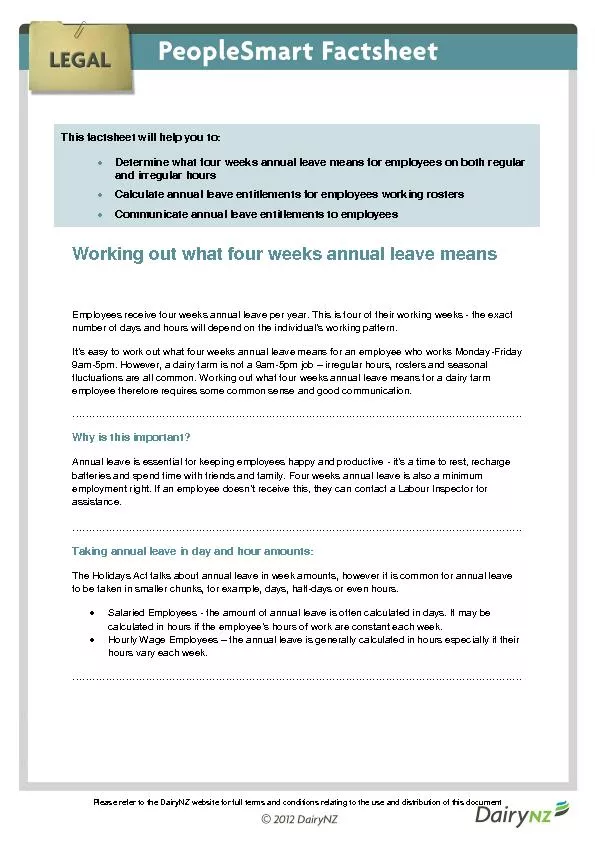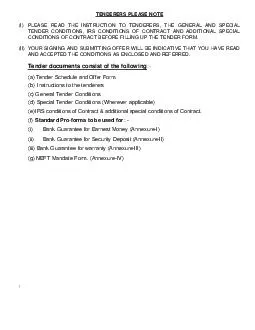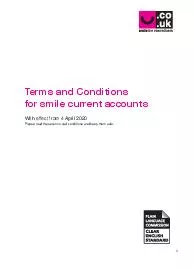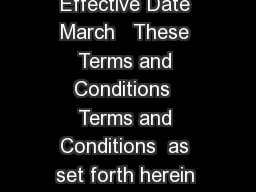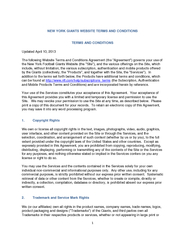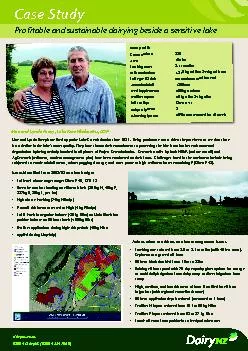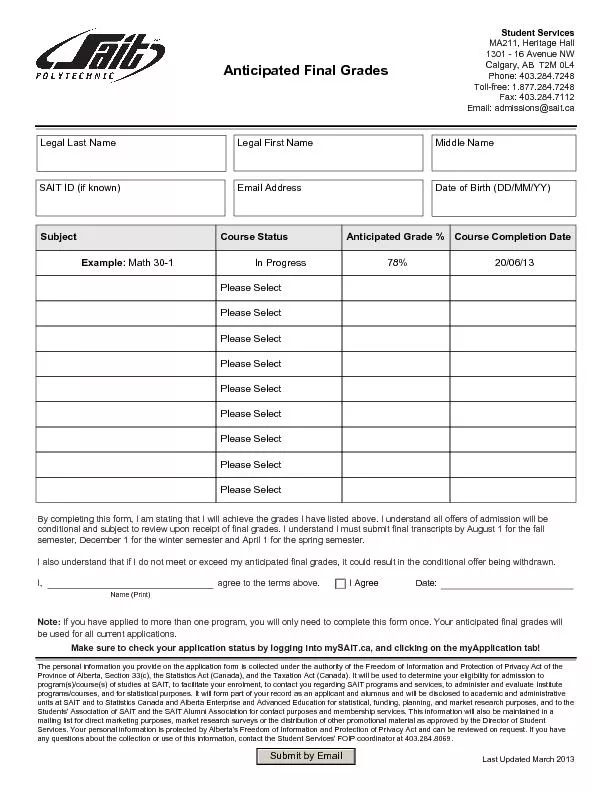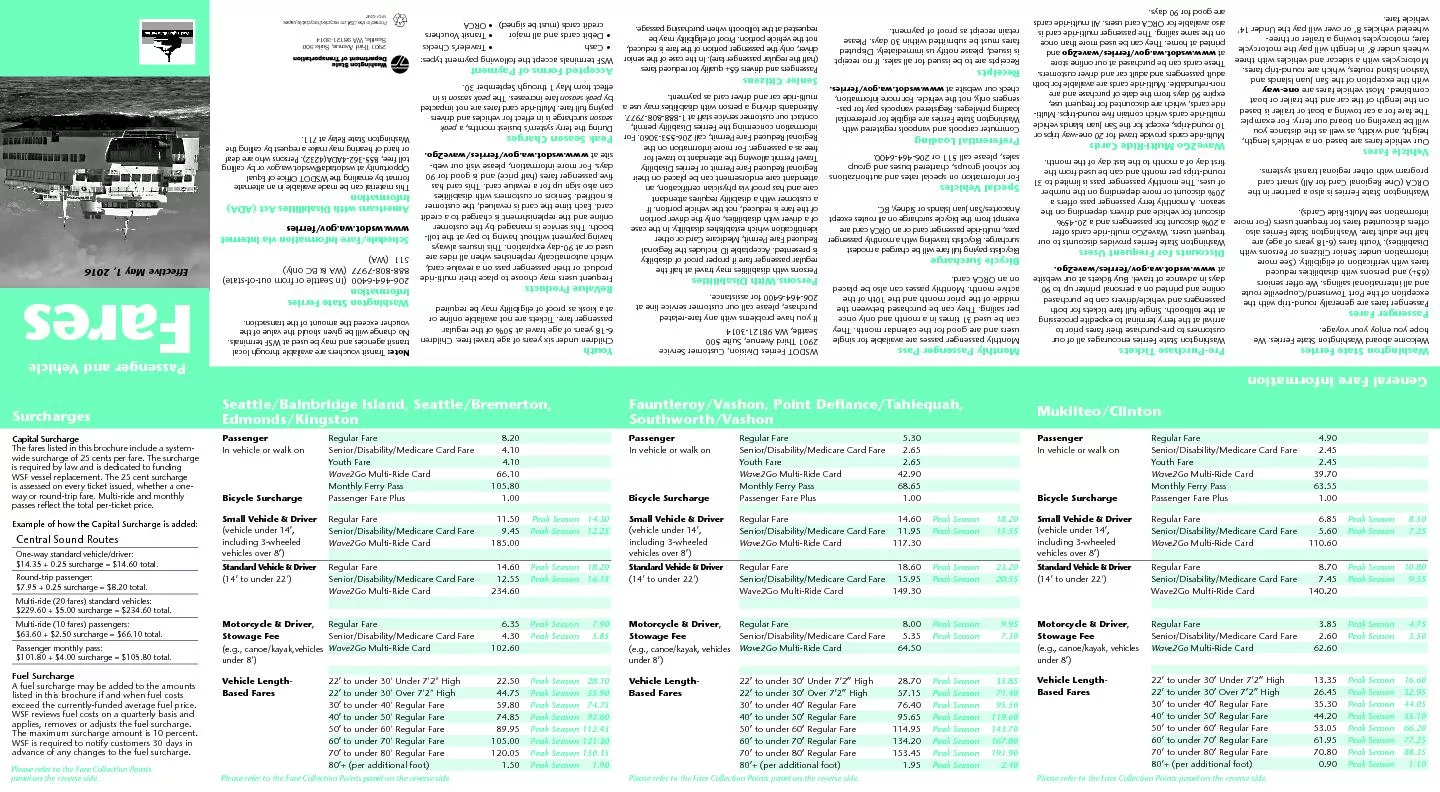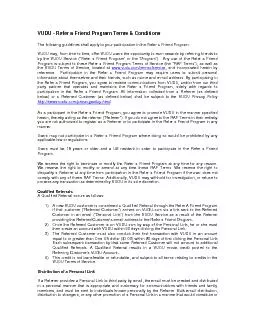PDF-Please refer to the DairyNZ website for full terms and conditions rela
Author : tawny-fly | Published Date : 2016-08-24
Working out what four weeks annual leave means Employees receive four weeks annual leave per year This is four of their working weeks the exact number of days and
Presentation Embed Code
Download Presentation
Download Presentation The PPT/PDF document "Please refer to the DairyNZ website for ..." is the property of its rightful owner. Permission is granted to download and print the materials on this website for personal, non-commercial use only, and to display it on your personal computer provided you do not modify the materials and that you retain all copyright notices contained in the materials. By downloading content from our website, you accept the terms of this agreement.
Please refer to the DairyNZ website for full terms and conditions rela: Transcript
Download Rules Of Document
"Please refer to the DairyNZ website for full terms and conditions rela"The content belongs to its owner. You may download and print it for personal use, without modification, and keep all copyright notices. By downloading, you agree to these terms.
Related Documents

